- Free Interview Course


CPC DRIVER CASE STUDY ASSESSMENT TESTS FULL PRACTICE MOCK TESTS
(7 Practice Driver CPC Module 2 Case Study Assessments)
Trusted by 100,000s worldwide:
Why do I need to take a Case Study Assessment? The Case Study Assessment Test is a crucial component of the Driver Certificate of Professional Competence (CPC) qualification for several reasons. Firstly, it assesses drivers’ ability to apply theoretical knowledge to real-world situations, ensuring they can make informed decisions on the road. Secondly, it promotes ongoing learning and adaptation to changes within the transportation industry, enhancing drivers’ competency and professionalism. Lastly, the test standardises evaluation criteria, ensuring all CPC holders meet consistent standards of excellence, thereby enhancing public trust and safety. In essence, the Case Study Assessment Test plays a pivotal role in upholding the integrity of the profession and safeguarding road users by ensuring drivers possess the necessary skills and knowledge to operate safely and responsibly.
ABOUT THE DRIVER CPC CASE STUDY ASSESSMENT
The Driver Certificate of Professional Competence (CPC) Case Study Assessment is a comprehensive evaluation tool designed to test drivers’ ability to apply their knowledge and expertise in real-world scenarios. Through a series of carefully crafted case studies, drivers are presented with challenging situations that they may encounter during their professional driving careers. These case studies cover a wide range of topics, including road safety, vehicle maintenance, driver health and well-being, and compliance with legal and regulatory requirements. By assessing how drivers analyse, prioritise, and respond to these scenarios, the Case Study Assessment provides valuable insights into their practical skills, decision-making abilities, and overall readiness to operate safely and effectively on the road.
Moreover, the Case Study Assessment serves as a dynamic learning experience for drivers, offering opportunities to deepen their understanding of industry standards, best practices, and emerging issues. By engaging with realistic case studies, drivers are encouraged to reflect on their own practices, identify areas for improvement, and stay abreast of developments within the transportation sector. The test itself is made up of 50 questions presented in groups of 6-8 questions per scenario. The test will contain six different scenarios.
ACCESS THE ONLINE DRIVER CPC CASE STUDY MOCK TESTS NOW (CONTAINS 7 COMPREHENSIVE FULL MOCK TESTS WITH A TOTAL OF 350 QUESTIONS, ANSWERS AND EXPLANATIONS)
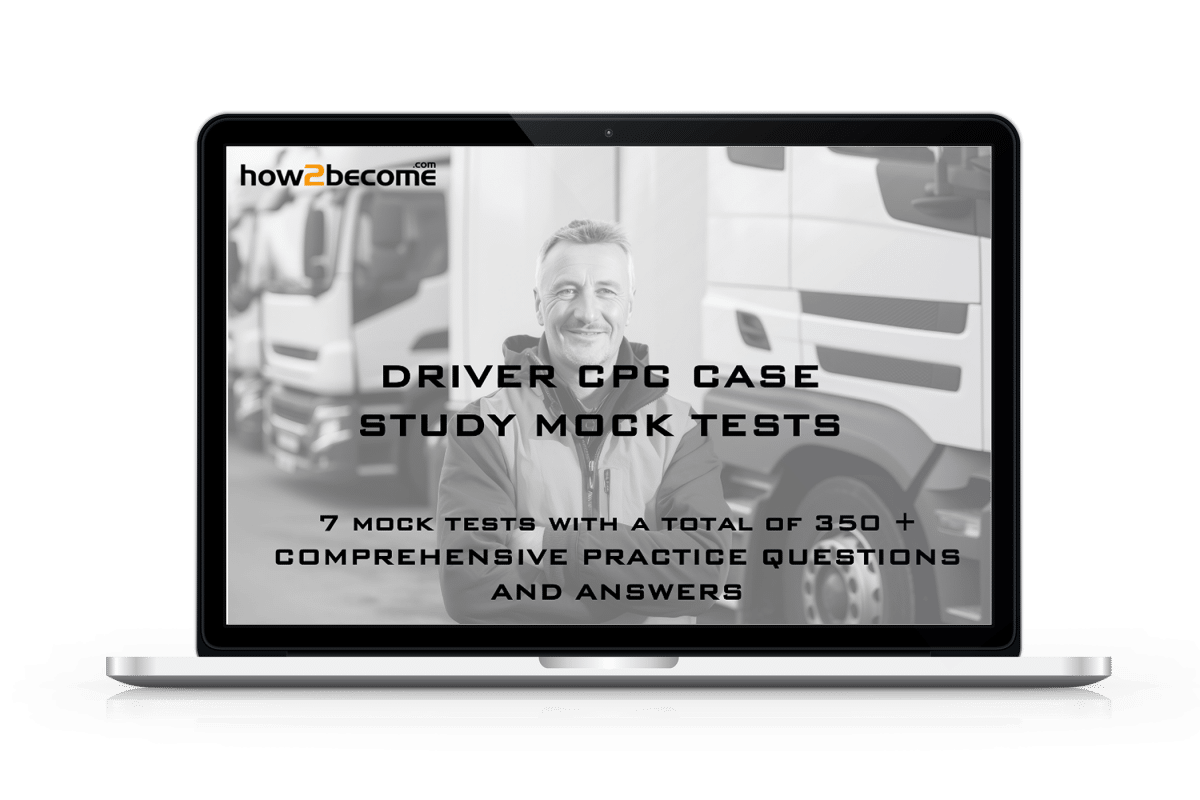
CPC DRIVER CASE STUDY ASSESSMENT PRACTICE SCENARIOS!
A CPC driver case study scenario typically contains a detailed description of a real-world situation that a professional driver may encounter during their work. These scenarios cover a wide range of topics related to driving, road safety, and the transportation industry. Here are some elements commonly found in a CPC driver case study scenario:
Background information
The scenario often begins with background information, setting the context for the situation. This may include details about the driver’s route, the type of vehicle being operated, weather conditions, traffic conditions, and any relevant logistical considerations.
Problem or challenge
The Questions may presents a specific problem or challenge that the driver must address. This could involve issues such as vehicle breakdowns, traffic accidents, adverse weather conditions, road closures, or compliance with regulations.
Decision points
The scenario typically includes decision points where the driver must make choices about how to respond to the situation. These decisions may involve prioritising safety, managing time constraints, communicating with relevant parties, or complying with legal requirements.
Consequences
The scenario outlines the potential consequences of different courses of action taken by the driver. This could include implications for safety, regulatory compliance, operational efficiency, customer satisfaction, and the driver’s professional reputation.
Reflective questions
In some cases, the scenario may include reflective questions that prompt the driver to consider their actions, evaluate alternative approaches, and reflect on lessons learned from the experience.

Now INSTANTLY access all 7 Driver CPC Case Study Mock Tests including answers and explanations.
Here's What People Are Saying...
(worldwide success stories from our YouTube community!)

1 week ago (edited)

Have an assessment centre tomorrow and praying i'll also get it.
Update: Got the job! Thank you!
2 months ago (edited)

I've got a online assessement with an investment bank coming up and would love to get the right list of questions for it 🙂
3 months ago (edited)

Thank you so much! I went today and got the job on the spot!
2 weeks ago

...they made me take a basic vocabulary and typing test...I fortunately got a call back the next day saying I got the job!
3 months ago

I have my test tomorrow...
UPDATE: I'm Hired♥️♥️ I am so happy 😊😊😊😊

Richard, After getting myself trained from your tutorials , I GOT THE BEST JOB IN AUSTRALIA 🙂 . I have to say that I cracked my assessment for a Big company because of your lessons. A big thanks to you ,God bless you.

...I'm so nervous! Hope these tips will help out :') UPDATE: I got the job!!! These tips were so helpful thank you!
6 days ago (edited)

I am sooooo NERVOUS! ...Fingers crossed 🤞🏾
UPDATE: I GOT THE JOB! 🥂🍾

Thanks to you I got the job. THANK YOU SO MUCH❤️
1 month ago

Thank u very much this helped me in my college entrance tests!

I just want to say thank you. I went to sit my test yesterday and I passed. I practiced ur test questions and it made me feel really confident!
GET INSTANT ACCESS TO 7 FULL DRIVER CPC CASE STUDY MOCK ASSESSMENTS
FOR JUST £11.99
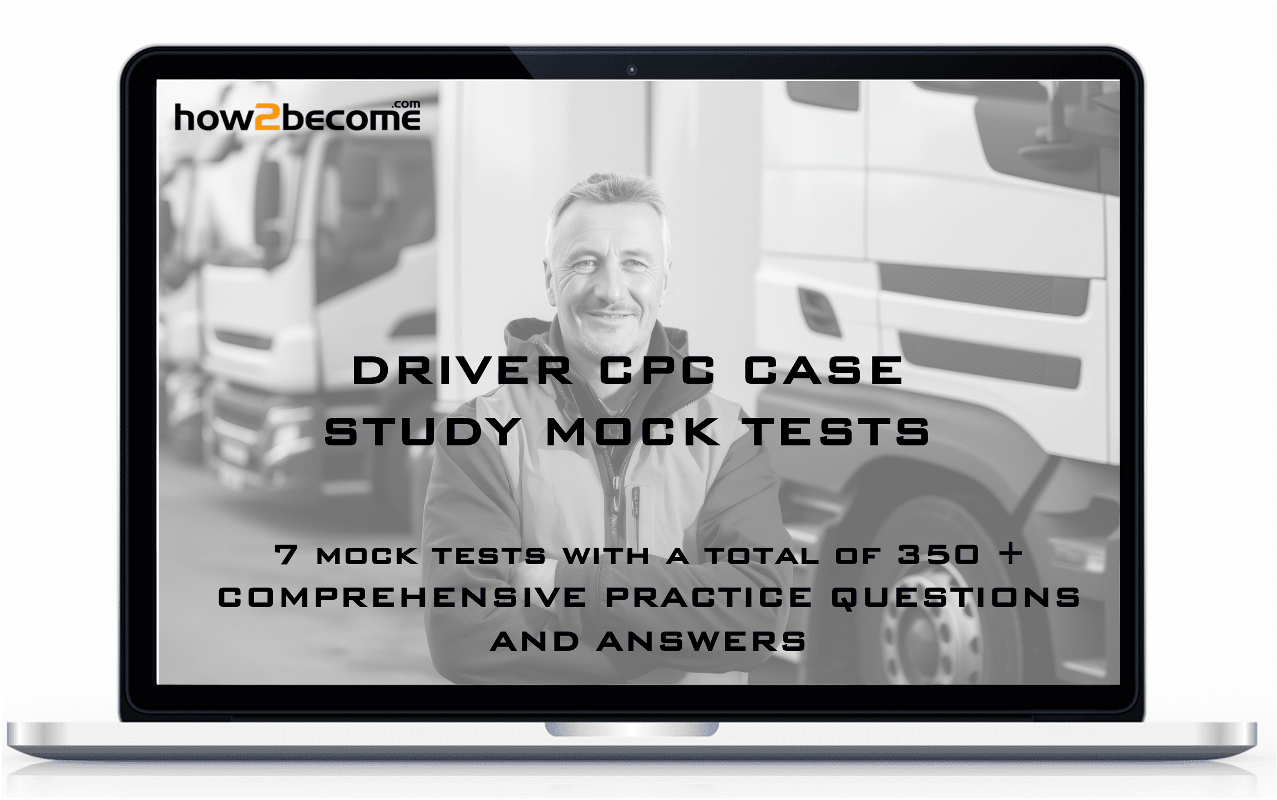
What you’ll get…
7 Full DRIVER CPC Case Study Assessment mock tests complete with 50 questions each. All questions designed to help you effectively prepare for your Driver CPC case study assessment!
Answers/explanations to all of the questions to ensure you gain an advantage and pass.
In-depth and challenging scenarios designed to ensure you get the maximum benefit from each assessment.
Instant access to the mock tests and vital study guides via our comprehensive online testing system.
All of the above for just £11.99.
Pass your Driver CPC Case Study Assessment today. Trusted by 10,000s of customers worldwide.
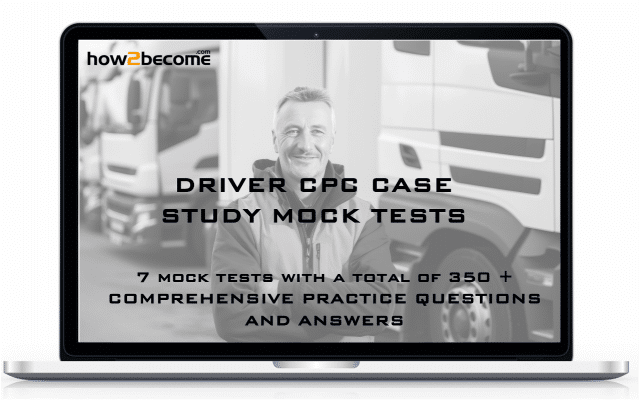
- 30-Day Money Back Guarantee
PLUS… BONUS In addition to the Case Study Assessment Pack, you will also receive the following BONUS:
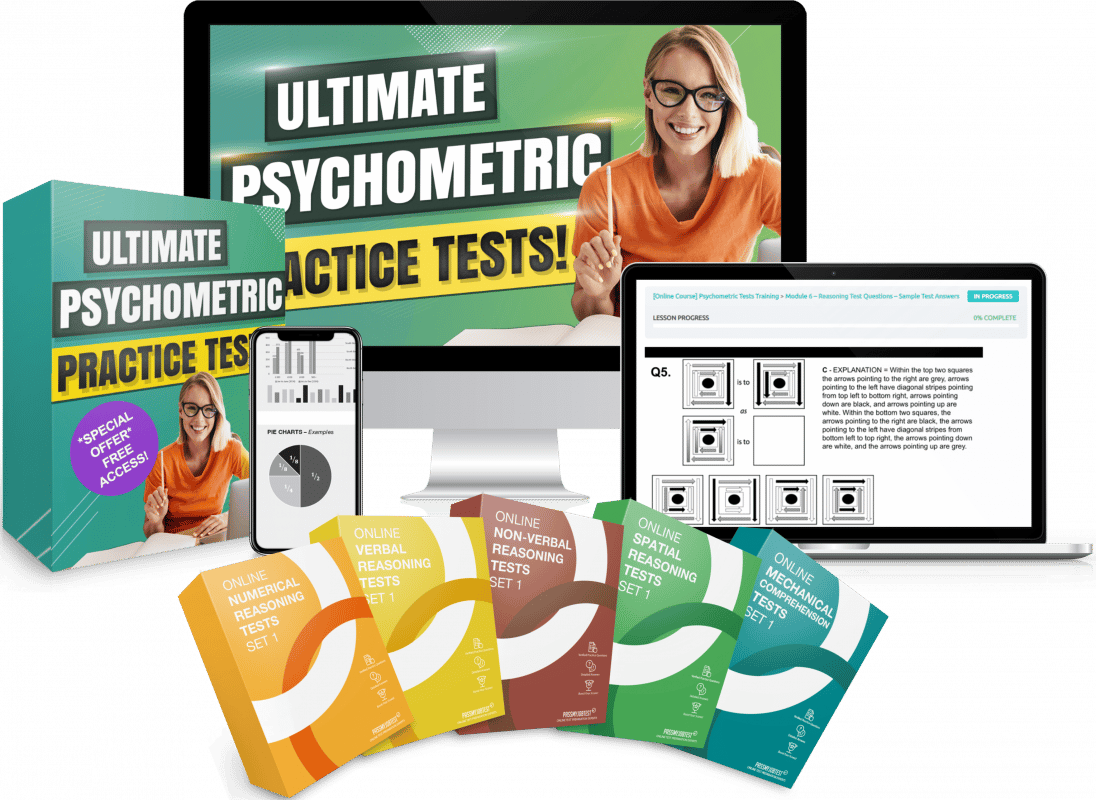
Online Psychometric Test Training Course – FREE bonus access to our bestselling online psychometric training course, which contains over 30 powerful video modules to quickly get you assessment-ready (and they work for ANY assessment). This online course will instantly be free for you to access via a 30-day trial, thereafter, it is automatically renewed at just £27+vat per month. No minimum terms. Cancel anytime. Limited time offer.

30-DAY MONEYBACK GUARANTEE
We have eliminated all risk for you. All of our products and training resources are protected by our 30-day no questions asked money-back guarantee. Whatever the reason…or no reason at all…you can have a full refund if this resource isn’t right for you. So there is no risk.
Who has created the questions and answers to the test questions?
Richard McMunn is a former Fire Officer turned psychometric assessment coach who has over 20 years experience within the recruitment industry.
He is extremely passionate about helping people pass their assessments, and his success rate is unrivalled within the assessment training sector.

Still not convinced? Here’s why you should buy with How2Become.com…
Firstly, these practice questions and answers are created by us and our team of experts – we have all the most commonly used (and less common) practice questions industry assessors are using and we will help you succeed (like we’ve been doing for the last 17 years) and we update our material frequently.
Secondly, we provide exclusive bonuses with all our products that you won’t find anywhere else. These bonuses include free guides, powerful online training and more!
Thirdly, our testing preparation packages and training just work. Take a look at our customer reviews and feedback where our customers share their positive buying experiences and more importantly the time-saving success our resources have given them (hint: they passed their job assessments).
Finally, we have eliminated all risk for you. All of our products and resources are protected by our 30-day no questions asked money-back guarantee. Whatever the reason…or no reason at all…you can have a full refund if this training isn’t right for you. So there is no risk.
MORE TESTIMONIALS
Having helped 100,000s of candidates over the past 17 years, it is no wonder our community loves us…
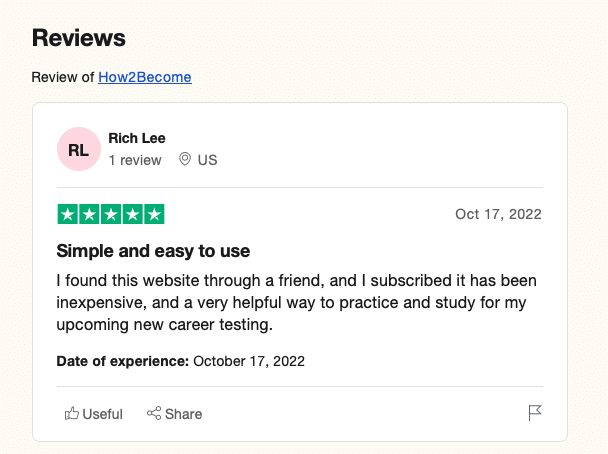
*100,000+ relates to all How2Become resources designed to help people like you pass their recruitment processes being used worldwide.
- Free Aptitude Tests

- Privacy Overview
- Strictly Necessary Cookies
This website uses cookies so that we can provide you with the best user experience possible. Cookie information is stored in your browser and performs functions such as recognising you when you return to our website and helping our team to understand which sections of the website you find most interesting and useful.
Strictly Necessary Cookie should be enabled at all times so that we can save your preferences for cookie settings.
If you disable this cookie, we will not be able to save your preferences. This means that every time you visit this website you will need to enable or disable cookies again.

CPC Case Study Practice Test
Mock theory test.
There are 12 multiple choice questions in this free CPC case study practice mock test. Read this carefully and ensure you fully understand the scenario before starting the test. You need to score at least 9 out of 11 to pass this test.
Register to track your progress
Tests Taken
Average Score
Your Progress
You're doing well! Carry on practising to make sure you're prepared for your test. You'll soon see your scores improve!
Do you wish to proceed?
Easy View of Theory Test Questions


- CPC Module 2
- Questions List
- CPC Module 4
- Modular Course
John is the driver of a flatbed HGV and is nearing the end of a 9 hour driving day. He has taken appropriate breaks. As he negotiates a right hand bend he notices in his mirror that a roll of steel has fallen from his vehicle, resulting in a pedestrian being injured.
It has been noted that the fuel consumption of John’s vehicle is significantly higher than similar vehicles in the fleet.

CPC Module 2 Mock Test
There are 5 multiple choice questions in this CPC Module 2 case study. Read this carefully and ensure you fully understand the scenario before starting the test. You need to score 4 out of 5 to pass. Good luck!
Sign up to keep track of your progress
Your Progress
You're doing well! Carry on practising to make sure you're prepared for your test. You'll soon see your scores improve!
Tests Taken
Average Score
Do you wish to proceed?
1614 votes - average 4.8 out of 5
Leave a comment
See all of our CPC Module 2 Case Study Mock Tests
About CPC Module 2

- 1 CPC Module 2 Mock Test
- 2 About CPC Module 2
- 3 What does CPC Module 2 assess?
- 4 What can you expect in the CPC Module 2 test?
- 5 CPC Module 2 Questions and Answers
- 6 The CPC Module 2 pass mark
- 7 How to prepare for the Driver CPC
What does CPC Module 2 assess?
Module 2 of the Driver CPC qualification consists of case studies based on real-life scenarios. These scenarios demonstrate situations you may face and need to be able to deal with in your working life. The case study test allows you to demonstrate your knowledge and understanding and assesses you on how to put your knowledge and skills into practice. Remember, this module requires you to use what you have learned to make your own judgements on each scenario. The CPC Module 2 assessment lasts 1 hour and 30 minutes and tests you on 6 to 8 case studies. You will then be asked between 5 and 10 questions about the scenarios in each case study. Answers can be provided in 4 ways but will usually either be from a multiple-choice list or require you to click on certain areas of an image or photograph. As mentioned, you have to pass the Driver CPC Case Study Test before you are able to take Driver CPC Practical Demonstration Test ( CPC Module 4 ).
As a professional driver of large goods vehicles, you could encounter any of the circumstances in the case studies during your working life. The questions asked are designed to make you think about how you should behave in each scenario. The Driver CPC Module Case Studies also assess 3 key skills:
- Your knowledge – You will be tested on your basic ability to recall factual information.
- Comprehension – You will be tested on your basic ability to understand situations you may face in your working life.
- Your application of knowledge – You will be tested on your ability to practically apply your knowledge and understanding to real-life situations.
What can you expect in the CPC Module 2 test?
As outlined above, the test will last 90 minutes and be made up of between 6 and 8 case study scenarios. Before the test starts, you have 15 minutes to get to grips with how the testing equipment works. This means you will have 75 minutes in which to answer the questions on the case studies. You will be using a Visual Display Unit (VDU) like the one used for the Theory Test.
Each case study has between 5 and 10 questions asked about each scenario. However, whether you have 6 or 8 scenarios in your test you will always be asked a total of 50 questions. To register your responses, you can either use the mouse or the touch screen functionality of the VDU.
If you have already sat the multiple-choice and hazard perception tests for Module 1, then you will be familiar with how to use the VDU.
CPC Module 2 Questions and Answers
There are four possible ways you will be asked to answer the questions appearing on the right of your screen. These four ways are detailed below:
1. Multiple Choice Questions
As in the Module 1 theory test, some questions will require you to choose just ONE correct answer from a list of possible options.
2. Multi-response Questions
You may also have been asked questions like these in the theory test. For multi-response questions, you are required to select more than one right answer from a list of options.
3. Audio Questions
Some questions about the case studies require you to listen to an additional audio clip. You will need to listen to an audio clip to be able to answer these questions. Audio questions require you to choose just ONE correct answer from a list of options.
4. Hot Spot
Hot spot questions require the use of the mouse or a touch screen to click on appropriate areas of photographs or illustrations.
During the 15 minutes before the test starts, you will have the chance to practice answering questions asked in each of these ways. However, the practice questions will not be scored.
Once you have answered all of the questions relating to a case study you can click on the ‘next’ button located on the bottom left of the screen. This will take you to the next case study until you have completed 50 questions. You are able to double-check or change answers in previous case studies at any time if you realise you answered something wrong.
The CPC Module 2 pass mark
As of 21 st March 2011, the pass mark for the Driver CPC has gone up to 40. You will be asked a total of 50 questions, so need a pass mark of 80% to pass your Driver CPC. Once you have passed Module 2 you will have 2 years to pass the Driver CPC 4 practical demonstration test.
How to prepare for the Driver CPC
In order to prepare for the Driver CPC module 2, there are a number of simple steps you can undertake. The key is to revise using example questions. However, note that the questions you will be asked during the test will not be exactly the same as the questions you revise. Nevertheless, they will be a variation of the questions and revising gives you the chance to be prepared with the knowledge required to answer the questions however they may have been asked. You should also:
1. Understand the Driver CPC
It will be useful to understand each of the different modules involved in the Driver CPC before taking this test. Make sure you understand the differences between Modules 1, 2, 3, and 4 of the Driver CPC.
2. Practice with our online resources
It is vital to practice with example questions. Our CPC module 2 practice material covers everything you need to pass the test. This includes:
- Safe and Fuel-Efficient Driving (SAFED)
- Load safety
- Securing loads
- Regulations governing carrying certain load types
- Regulations that govern the prevention of trafficking
- Regulations that govern driver hours and tachographs
- Health & Safety at Work
- Keeping yourself fit for the job
- Dealing with emergencies
- The role of a driver in a company or organisations
- Organisation of freight transport
- Other techniques for safe driving
3. Make sure to read example questions
You will need to read example questions on each of these areas. Make sure to read a variety of questions for each topic area to ensure you richly understand the subject.
4. Practice
It is a good idea to randomly practice answering questions from each of these sections. You may find you are more comfortable in some areas than others. Once you feel you are ready, it is advisable to take a practice test.
5. Practice tests
Once you have practised answering questions for each of the sections, it is a good idea to practice under exam conditions. This will help you feel more comfortable on the day of the test.
You will receive the results on the day of the test as they are available within 10 minutes of completing the test. The pass letter is dated and you have two years to complete Part 4 of the Driver CPC from this date.
If you fail Module 2 of the Driver CPC, your results letter will explain why you have failed and provide feedback. You can book a re-test on the same day but this will take a minimum of three working days to be cleared and approved.

CPC Module 2
Post_title;>-->.
There are 9 questions in this CPC module 2 case study. Read the scenario carefully and ensure you understand it fully. You need to score at least 7 out of 9 to pass. Good luck!
Sign up to keep track of your progress
Tests Taken
Average Score
Your Progress
You're doing well! Carry on practising to make sure you're prepared for your test. You'll soon see your scores improve!
Do you wish to proceed?
1315 votes - average 4.8 out of 5
CPC Module 2 Quick View
Click the question box to reveal the correct answer. You can print the CPC Module 2 questions and answers by clicking the printer icon below.
Privacy Overview
| Cookie | Duration | Description |
|---|---|---|
| cookielawinfo-checkbox-analytics | 11 months | This cookie is set by GDPR Cookie Consent plugin. The cookie is used to store the user consent for the cookies in the category "Analytics". |
| cookielawinfo-checkbox-functional | 11 months | The cookie is set by GDPR cookie consent to record the user consent for the cookies in the category "Functional". |
| cookielawinfo-checkbox-necessary | 11 months | This cookie is set by GDPR Cookie Consent plugin. The cookies is used to store the user consent for the cookies in the category "Necessary". |
| cookielawinfo-checkbox-others | 11 months | This cookie is set by GDPR Cookie Consent plugin. The cookie is used to store the user consent for the cookies in the category "Other. |
| cookielawinfo-checkbox-performance | 11 months | This cookie is set by GDPR Cookie Consent plugin. The cookie is used to store the user consent for the cookies in the category "Performance". |
| viewed_cookie_policy | 11 months | The cookie is set by the GDPR Cookie Consent plugin and is used to store whether or not user has consented to the use of cookies. It does not store any personal data. |
- Study Material
- Multiple-Choice Test
- Hazard Perception
- Practice Case Studies
- Show me, Tell me
- [email protected]
Free Practice Case Study
Trevor and John are multi-manning a vehicle from the UK to France. They work for TSD Haulage who have been contracted to deliver car exhausts to a manufacturing plant. They are driving a curtain-sided lorry with a gross vehicle weight of 18 tonnes and carrying a 10 tonne load.
This is John’s first trip abroad and he will take the opportunity to learn the ropes from Trevor who has been driving on the continent for over 20 years. Trevor will prepare the vehicle and complete the CMR consignment note before collecting John from his home which is on the way to the ferry port.

Both drivers have just returned from a four-day rest and are keen to get the job done as quickly as possible.
Today is Monday and Trevor will drive the first part of the journey to the ferry port. They will stop for their daily rest at 21:00 in France.
0 of 8 Questions completed
Information
You have already completed this test. You cannot start it again.
Test is loading...
You must sign in or sign up to take this test.
You must first complete the following:
Test complete. Results are being recorded.
0 of 8 Questions answered correctly
Time has elapsed.
- Not categorized 0%
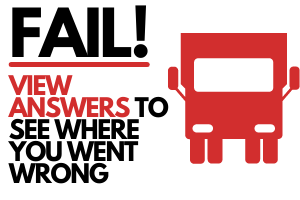
1 . Question
To qualify for multi-manning, John must be collected within:
- One hour of the start of the shift
- 50 km of the vehicle operating centre
- 25 km of the vehicle operating centre
- 45 minutes of the start of the shift
2 . Question
Trevor has completed 4 hours and 30 minutes of driving and must now take a minimum break of 45 minutes.
John will take over as the driver
(mark two answers)
- The vehicle must stop for Trevor's 45 minute break to be considered legal
- Trevor may take the 45-minute break whilst the vehicle is still moving
- Trevor and John must take a 45-minute break at the same time
- Trevor can use the time to do paperwork whilst John is driving
- Trevor must place his tachograph card in slot 2
- Trevor can give John directions and driving advice whilst on his break
3 . Question
The daily individual driving limit today for John and Trevor is
- Ten hours for John and ten hours for Trevor
- Nine hours for John and nine hours for Trevor
- Thirteen hours for both drivers
- Twenty one hours for both drivers
4 . Question
What is the total maximum duty time for John & Trevor?
5 . Question
When multi-manning, the maximum period within which all duty time and daily rest must be completed is:
6 . Question
To carry out this delivery, which type of operators licence should TSD Haulage hold?
- Standard International licence
- Restricted International licence
- European operators licence
- TIR operators licence
7 . Question
The wheelbase of the vehicle is 5 metres and the centre of the load is 2 metres from the rear axle.
What is the load on the front axle?
8 . Question
What colour copy of the CMR consignment note must travel with the vehicle?
- White with a black border
Prepare for your test with realistic questions.
The American Academy of Professional Coders (AAPC) Certified Professional Coder (CPC) exam is a credential used to demonstrate expertise in coding medical services and procedures performed by physicians, including coding patient symptoms, diagnoses, and diagnostic tests.
Click “Start Test” above to take a free CPC practice test, and check out our premium-quality CPC test prep resources by clicking the links below!
Is the CPC Exam Right for Me?
Successful completion of the CPC Exam requires you to have high-level medical terminology, anatomy, and pathophysiology knowledge and an understanding of CPT procedure codes, HCPCS Level II supply codes, and ICD-10-CM diagnosis codes.
If you have this understanding, the CPC Exam is an excellent way to showcase your knowledge and expertise, increase your employment opportunities, and potentially increase your salary!
CPC Exam Eligibility
To sit for the CPC exam, you must meet the following requirements:
- Demonstrate proficiency in evaluation and management, anesthesia, surgery, radiology, pathology, and medicine
- Possess sound knowledge of medical coding guidelines and regulations
- Exhibit mastery of anatomy, physiology, and medical terminology necessary to code diagnosis and services
- Understand how to integrate medical coding and payment policy changes into the reimbursement process
You can meet these requirements through prior medical coding experience or an AAPC-approved training program.
CPC Exam Outline
The Certified Professional Coder exam contains 100 multiple-choice questions, and you will be given 4 hours to complete it.
The questions are split into 17 knowledge areas and one set of 10 cases:
- Subcutaneous
- Pilonidal cysts
- Destruction
2. 20,000 Series CPT (6 questions) The questions in this section cover surgical procedures performed on the musculoskeletal system.
3. 30,000 Series CPT (6 questions) The questions in this section focus on surgical procedures performed on the following:
- Respiratory system
- Cardiovascular system
- Hemic system
- Lymphatic system
- Mediastinum
4. 40,000 Series CPT (6 questions) The questions in this section focus on your knowledge of surgical procedures performed on the digestive system.
5. 50,000 Series CPT (6 questions) The questions in this section will challenge your knowledge of surgical procedures performed on the following systems:
- Urinary system
- Male reproductive system
- Female reproductive system (including maternity and delivery)
- Endocrine system
6. 60,000 Series CPT (6 questions) The questions in this section assess your knowledge of coding surgical procedures performed on the nervous system.
7. Evaluation and Management (6 questions) The questions in this section assess your knowledge of proper coding related to place and level of services. It also includes questions on coding for the following:
- Preventative medicine
- Virtual services
- Neonatal and pediatric critical care
- Intensive care
- Prolonged services
- Chronic care
- Transitional care
- Case management
- Care plan oversight
8. Anesthesia (4 questions) The questions in this section assess your knowledge of the coding requirements for the following:
- Time reporting
- Qualifying circumstances
- Physical status modifiers
- Anesthesia for surgical, diagnostic, and obstetric services
9. Radiology (6 questions) The questions in this section focus on diagnostic and interventional radiology.
10. Laboratory/Pathology (6 questions) The questions in this section focus on your knowledge of the following:
- Organ and disease panels
- Rug testing
- Therapeutic drug assays
- Evocation/suppression testing
- Consultations
- Molecular pathology
- Hematology and coagulation
- Transfusions
- Microbiology
- Anatomic pathology
- Cytopathology
- Cytogenetic studies
- Surgical pathology
- In vivo and reproductive coding
11. Medicine (6 questions) The questions in this section cover multiple specialty-specific coding scenarios.
12. Medical Terminology (4 questions) The questions in this section assess your understanding of medical terminology for all systems.
13. Anatomy (4 questions) The questions in this section assess your knowledge of human anatomy for all systems.
14. ICD-10-CM/Diagnosis (5 questions) The questions in this section assess your proficiency in diagnosis for all chapters in the ICD-10-CM and your knowledge of the ICD-10-CM Official Guidelines for Coding and Reporting.
15. HCPCS Level II (3 questions) The questions in this section focus on modifiers, supplies, medications, and professional services for Medicare patients.
16. Coding Guidelines (7 questions) The questions in this section assess your understanding and expertise of the ICD-10-CM Official Guidelines for Coding and Reporting, CPT coding guidelines and parenthetical notes, and modifier use.
17. Compliance and Regulatory (3 questions) The questions in this section evaluate your knowledge of compliance and regulations that pertain to the following:
- Services covered under Medicare Parts A, B, C, and D
- Payment coding
- Place of service reporting
- Fraud and abuse
Check Out Mometrix's CPC Study Guide
Get practice questions, video tutorials, and detailed study lessons
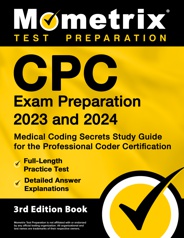
CPC Exam Registration
To register for the exam, you must be an AAPC member, which costs $190 ($125 for students). Once you have joined AAPC, you can use your account to register for the exam.
The exam itself costs $349 for one attempt or $449 for two. If you paid to take the test twice but you pass the exam on the first take, you do not get a refund of the money spent on the second attempt.
How to Study for the CPC Exam
Think you aren’t a good test-taker? Maybe on a study-time crunch? Or just don’t know how to begin studying? Mometrix has designed a new Study Secrets course to help every student, no matter what study scenario you are in. Here’s what you’ll find in the Study Secrets Course:
- Techniques to Conquer Procrastination
- Steps to building a Study Plan custom to your learning style
- 7 Effective Note-Taking Methods
- Test-Taking Tips
- Memory Techniques and Mnemonics
- And much more!
Everyone learns differently, so we’ve tailored our Study Secrets Course to ensure every learner has what they need to prepare for their upcoming exam or semester. Click below to check it out!
When you register, you will have the option to choose in-person testing or remote testing (LPR).
There are similarities between these two methods when it comes to the day of the exam. Both formats require a current, valid, government-issued form of identification. Both ways also allow you to bring a basic manual calculator and handwritten notes specific to daily coding activities. Additionally, you are allowed three reference books
- The AMA Professional edition of the CPT
- Your choice of the ICD-10-CM Official Guidelines with highlighting, underlining, and brief notations needed for day-to-day coding
- Your choice of HCPCS Level II
Keep in mind that the exam questions are based on the current calendar year’s code sets, and you might be disadvantaged in using prior publications.
There are similarities in the disallowed items as well. You are not allowed to bring electronic devices with an on/off switch, devices capable of capturing and storing images, study guides, Procedural Coding Expert , CPT Plus! – PMIC , CPT Insider’s View – AMA , or the ICD-10-CM Easy Coder.

In-person Testing
On the day of your exam, you should arrive 15-30 minutes early at your exam location. You must also bring your photo ID, two No. 2 pencils, an eraser, a manual calculator, and your coding books and references. Keep your belongings in your car or at home; you are not allowed to bring anything not approved into the testing center.
After you show your ID to the testing center administrator, you will be directed to your testing station. You will complete a familiarization tutorial there, and your exam begins when you are finished with the tutorial.
You can take breaks during the exam period, but you will not regain the time you lose on your break.
Live Remote Proctoring
You will need to log on to the testing environment 5-10 minutes before your appointment time. By logging on early, you can troubleshoot issues like connecting to the testing platform, microphone issues, lagging internet, etc.
When your proctor signs on, present your government-issued photo ID. Then, rotate your camera around your space for the proctor’s approval. When your area is approved, replace your webcam, ensuring your face, fingers, keyboard, and keyboard area are always in the frame. Once the webcam is back in place, you cannot move out of its view.
A bottle of water, two No. 2 pencils, an eraser, a sheet of blank paper, approved reference materials, and a manual calculator are all allowed to be on your desk.
How the CPC Exam is Scored
You need to answer 70 questions correctly to pass the exam. The correct answers are worth 1 point each, and they are combined to calculate your final score. Your results are released to your AAPC account seven to ten days after you take the exam. If you do not receive your test results after ten days, contact AAPC for guidance.
If you did not pass the exam, you can register to retake the exam. If you paid for the two-test bundle, there is no additional fee. If you did not pay for the two-test bundle, you would pay the $349 test registration fee.
You can take the exam as often as needed, but you will pay the full registration fee each time.
Check Out Mometrix's CPC Flashcards
Get complex subjects broken down into easily understandable concepts
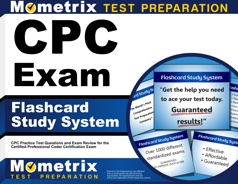
How to Study Effectively
Your success on CPC test day depends not only on how many hours you put into preparing but also on whether you prepared the right way. It’s good to check along the way to see whether your studying is paying off. One of the most effective ways to do this is by taking CPC practice tests to evaluate your progress. Practice tests are useful because they show exactly where you need to improve. Every time you take a free CPC exam practice test, pay special attention to these three groups of questions:
- The questions you got wrong
- The ones you had to guess on, even if you guessed right
- The ones you found difficult or slow to work through
This will show you exactly what your weak areas are and where you need to devote more study time. Ask yourself why each of these questions gave you trouble. Was it because you didn’t understand the material? Was it because you didn’t remember the vocabulary? Do you need more repetitions on this type of question to build speed and confidence? Dig into those questions and figure out how you can strengthen your weak areas as you go back to review the material.
Answer Explanations
Additionally, many CPC practice tests have a section explaining the answer choices. It can be tempting to read the explanation and think that you now have a good understanding of the concept. However, an explanation likely only covers part of the question’s broader context. Even if the explanation makes sense, go back and investigate every concept related to the question until you’re positive you have a thorough understanding.
Comprehend Each Topic
As you go along, keep in mind that the CPC practice test is just that: practice. Memorizing these questions and answers will not be very helpful on the actual test because it is unlikely to have any of the same exact questions. If you only know the right answers to the sample questions, you won’t be prepared for the real thing. Study the concepts until you understand them fully, and then you’ll be able to answer any question that shows up on the test.
Strategy for CPC Practice
When you’re ready to start taking practice tests, follow this strategy:
- Remove Limitations. Take the first test with no time constraints and with your notes and CPC study guide handy. Take your time and focus on applying the strategies you’ve learned.
- Time Yourself. Take the second practice test “open book” as well, but set a timer and practice pacing yourself to finish in time.
- Simulate Test Day. Take any other practice tests as if it were test day. Set a timer and put away your study materials. Sit at a table or desk in a quiet room, imagine yourself at the testing center, and answer questions as quickly and accurately as possible.
- Keep Practicing. Keep taking practice tests on a regular basis until you run out of practice tests or it’s time for the actual test. Your mind will be ready for the schedule and stress of test day, and you’ll be able to focus on recalling the material you’ve learned.
How long is the CPC exam?
The time limit for the exam is 4 hours.
How many questions are on the CPC exam?
There are 100 questions on the exam.
What is a passing score for the CPC exam?
To pass the exam, you will need to answer at least 70 questions correctly.
How much does the CPC exam cost?
The exam costs $349.

By Kate Nockunas
Kate has been Mometrix’s Nursing and Medical Editor for over four years. She has a bachelor’s degree in Communications from Vanderbilt University, a bachelor’s degree in Nursing from Marymount University, and a master’s degree in Education from Johns Hopkins. Kate is a critical care registered nurse who still works occasionally in the ICU and PACU.
by Mometrix Test Preparation | Last Updated: September 6, 2024
On this page:
It appears JavaScript is disabled. In order for this website to function correctly you need to enable JavaScript in your browser.
In order to drive professionally you must also pass the driver CPC case study test (also known as the Driver CPC case study theory test - Step 2). Both the truck and the bus case study tests ask you to look at three real-life situations a professional driver might face.
Each case study test is computer-based and user-friendly, and works as follows:
- you will be asked 15 questions on each of three real-life driver situations
- to pass you must score at least 5 out of 15 in each situation and have an overall score of at least 28 out of 45.
You can prepare for the case study test by reading and learning the Rules of the Road. There are a wide range of official printed, digital and online learning materials available.
Case study test learning resources
To prepare for your case study test you should study the following:
- The Official driver theory test truck and bus book , available online or in most book shops
- The Rules of the Road
The RSA also has approved Driver CPC Trainers who can help you pass the CPC case study test.
How to book your case study test
If you want to become a category C (CPC truck) or category D (CPC bus) driver you must pass a case study test.
You must have passed the Driver CPC theory test (Step 1) in the relevant category before you can sit your case study test.
You have the option to sit it at any of the 40+ theory test centre locations nationwide.
If you're ready, you can go ahead and book your case study test online now.
/driver-theory-test.jpg)
Book your case study test
Book, reschedule or cancel a CPC theory (case study) test
Rescheduling or cancelling your case study test
You can reschedule or cancel your case study test online.
You must submit your cancellation or rescheduling request at least five days before your test booking. These five days must include three working days.
Your case study test result
When you complete your case study test you will be given a score report. This will tell you whether you have passed or failed your test.
If you've passed
When you pass the case study test you are issued with a driver CPC case study test certificate. This is valid for up to two years. You should apply for a learner permit within that time. After two years the certificate will no longer be valid and you will have to pay for and sit the case study test again.
If you're unsuccessful
If you're unsuccessful at your case study test, you'll get a score report with feedback telling you where you went wrong. Pay attention to these areas as they will help with your revision and give you a better chance of passing next time.
You can book another case study test straight away, but you can't take it for another three clear working days.
Frequently asked questions
Yes. But we would not recommend this as the multiple choice theory test can take up to 3 hours to complete (depending on which theory test you have applied for) and the case study test takes 1.5 hours to complete.
No. Once you have passed the theory test in the relevant category you can go ahead and apply for your learner permit straight away and take your case study test at a later time.
No, but you must pass the case study test before you can apply for and complete the CPC walk around test.
Have you tried our help section?
Need Practice for the Real Thing? Free CPC (Certified Professional Coder) Practice Exam (2023)
Preparing for the CPC can be daunting - but it doesn't have to be!
We've prepared a full-length 100-question CPC practice exam that will prepare you for the real thing.
Sit down with a block of time and take the full 4-hour test, or bite off some questions to practice in between the rest of your busy life.
Short on time? Click here to get started on the exam right away.
What is on the CPC exam?
The CPC exam consists of 100 questions drawn from 17 categories.
Most questions present a coding scenario to test proper application of CPT® procedure codes, HCPCS Level II supply codes, and ICD-10-CM diagnosis codes. The remaining questions cover medical billing and coding procedures, terminology, the insurance industry, and healthcare laws like HIPAA .
The categories covered on the exam are:
- CPT 10000 - Integumentary System (Skin, nails, hair)
- CPT 20000 - Musculoskeletal System
- CPT 30000 - Respiratory System
- CPT 40000 - Digestive
- CPT 50000 - Reproductive
- CPT 60000 - Nervous system
- Lab pathology (Panels, drug testing, chemistry, transfusions)
- Medical specialties (Immunizations, psychiatry, ophthalmology, cardivascular, pulmonary, genetics, chemotherapy)
- Medical Terminology
- Anatomy & Physiology
- HCPCS Level II (Medicare-related codes)
- ICD-10-CM Coding
- Coding Guidelines (both ICD & CPT)
- Compliance and Regulations (Medicare, HIPAA, national/local coverage, reimbursement, and RVUs)
- Healthcare Law & Ethics
The test lasts 4 hours and you must correctly answer at least 70% of the exam questions to pass.
What resources can I use for the free practice CPC exam?
The test is open book, and you may use approved CPT®, ICD-10-CM, and HCPCS Level II code books.
(We recommend the official AAPC books:
- AMA's CPT ® Professional Edition (current year)
- ICD-10-CM (current year)
- HCPCS Level II (current year)
It's best to practice in the same environment in which you will actually take the real test. Electronic devices with an on/off switch (cell phones, smart phones, tablets, etc.) are not allowed into the examination room.
How should I use the Free CPC Practice Test?
Set yourself up in a quiet area where you can focus for 4 hours. Treat the practice test exactly how you would the real thing - with focus, mood, having eaten, eliminate distraction, and have some water nearby. Close your door if possible and let people know you will be studying for an important test and would greatly appreciate no distractions.
Taking it the same way you would take the real test will help you focus and take the practice exam seriously, and will help you build up the test-taking ability that will serve you well on your actual Exam Day.
Are there other CPC resources that you recommend?
Yes! Check out our page for more free CPC exam questions and resources, and also check out the AAPC's official practice tests and study guide. While they can be quite pricey (up to $2670 for the full prep course), the practice tests are fully worth it, as they are the closest thing you can get to an official test made by the exam creators.
For those studying on a budget or simply looking for extra affordable practice, Gunnar Bengtsson's book contains 150 CPC exam questions with explanations. His book is highly rated, with over 300+ 5-star ratings, and people rave about how it helped them prepare.
One note of caution: buyers say this book contains questions that are even harder than the actual CPC - which is amazing, because it shows that if you can prepare for Gunnar's book, the actual CPC will be easy in comparison.
For those worried about difficulty, many readers say that the difficulty helped them, because they were able to prepare better and ended up learning the material much better than if they just studied themselves. It's good to experience a little challenge. To make sure the challenge results in learning, though, readers say to make sure to read the rationales (explanations), and to do a little bit of review every day to make the most of this book's practice.
Free CPC Practice Exam (2023)
Ready to start the test?
Click here to start the Free CPC Practice Exam (2023) .
All done? Congrats! Let's reflect on your performance
Remember, a score of 70% is passing.
Do you feel like you could have done this well or better, every time?
Whether you passed with flying colors, or you feel like you could have done better, more practice is always helpful to make sure you get the best score you can on the CPC, and continue on your medical billing and coding journey.
Click here for our additional Certified Professional Coder practice tests and practice materials. We're cheering for you!
Subscribe to Medical Coding Ace

- For Educators
- Exam Prep Overview
- Behavioral Health
- IT & Cybersecurity
- Nursing School
- Professional
- Skilled Trades
- Learning Science
- Success Stories
AAPC CPC ® Exam Prep
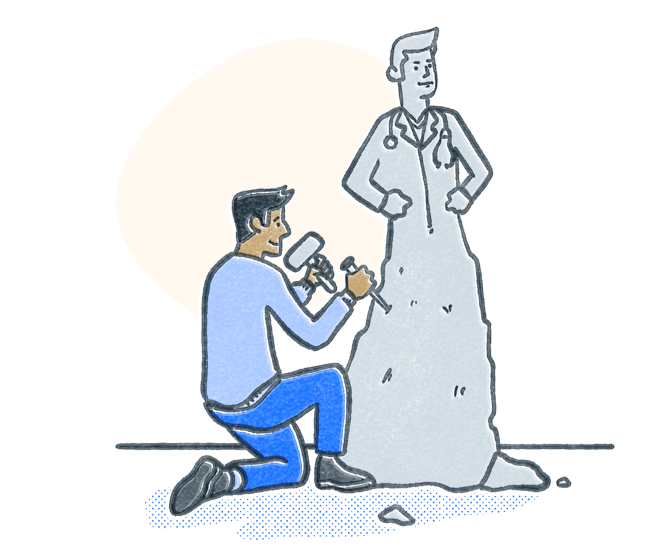
A candidate must score 70% or higher to pass the CPC.

- 1 Month $15.99 billed monthly $15.99 /mo
- 3 Months $39.99 billed every 3 months $13.99 /mo
- 12 Months $95.99 billed annually $7.99 /mo
While our app isn’t intended to be your only source of study material, we want to give you a peace of mind in studying with effective and engaging tools that you can rely on.
Pass your upcoming exam with Pocket Prep or we will provide you with three additional months of access to Premium Prep for free.

- Giving Back
- News & Press
- Help Center
- Privacy Policy
- Terms of Service
- Financial Support
- Scholarship
- Accessibility

CPC Practice Exam 3
Continue your CPC exam prep with 20 more multiple choice questions. These practice questions cover a wide variety of medical codes that you will need to know for your exam.
Quiz Summary
0 of 20 Questions completed
Information
You have already completed the quiz before. Hence you can not start it again.
Quiz is loading…
You must sign in or sign up to start the quiz.
You must first complete the following:
Exam complete. Results are being recorded.
0 of 20 Questions answered correctly
Time has elapsed
You have reached 0 of 0 point(s), ( 0 )
Earned Point(s): 0 of 0 , ( 0 ) 0 Essay(s) Pending (Possible Point(s): 0 )
- Not categorized 0%
1 . Question
A 23-year-old female is being seen by her physician today for anemia. she is one week post appendectomy. her hemoglobin prior to surgery was 13.4g/dl. today her lab results read 10.3 g/dl and the physician concluded she lost a large amount of blood after her appendectomy. she does not have any history of anemia prior to her surgery., what is the correct diagnosis for this patient’s anemia, 2 . question, what does the excludes 1 note mean.
- A. Not Included Here.
- B. Not Coded Here!
- C. Not Combined Here!
- D. Not Sure!
3 . Question
A 66-year-old male received a viral test for covid-19 by his physician. the results of the viral test were positive. his physician also sent him to receive a chest x-ray, in which he also tested positive for pneumonia in the rul., what icd-10 code should be used.
- B. U07.1, J96.01
- C. U07.1, J12.82
- D. J18.9, U07.1
4 . Question
An 89-year-old female with a history of smoking cigarettes daily since 1950. she is seen in the emergency department for shortness of breath (sob), hypertension, and congestive heart failure (chf). according to her previous cardiology notes she has acute diastolic chf., what icd-10 codes should be used.
- A. I11.0, I50.31, F17.210
- B. I10, I50.9, F17.200
- C. I11.0, I50.9
- D. I50.31, F17.200, I11.0
5 . Question
A patient has chronic obstructive pulmonary disease (copd) and is admitted to the hospital for treatment for bacterial pneumonia..
- A. J44.9, J18.9
- B. J44.10, J15.9
- C. J15.9, J44.0
- D. J44.0, J15.9
6 . Question
A 34-year-old male with sepsis is admitted into the hospital. he received a covid-19 viral test, and the results are positive. his medical records show that he has been vaccinated. while in the hospital he developed symptoms of septic shock., what are the appropriate icd-10 codes for this scenario.
- A. A41.89, R65.21
- B. R65.20, U07.1, A41.9
- C. U07.1, A41.89, R65.21
- D. A41.89, R65.20
7 . Question
A lady comes into the ed with sob. she is hypoxic and hypercapnic and is having possible respiratory failure. the physician determines she has acute respiratory distress syndrome (ards). what is the correct diagnosis for this scenario.
- C. J96.01, J96.01
- D. J80, J96.01, J96.02
8 . Question
When coding the placement of a catheter in the right middle artery, should the case be coded where the line begins (the insertion) or where the line ends up.
- A. Beginning
9 . Question
A patient was assaulted in the street, just outside the local grocery store. no one saw how the incident occurred, but the patient suffered from multiple fractures and contusions. the patient stated it was very dark then suddenly felt a hit. according to the patient’s x-rays, the left zygoma, left humerus, left tib/fib and left cuboid are fractured., where is the zygoma located, 10 . question, the patient comes into the office complaining of a sore throat. the throat is bright red. there is no sinus drainage or fever. the provider asks for a throat swab to be performed to rule out strep throat. the test results are negative., what is the correct icd-10 code.
- D. J02.0, B95.5
11 . Question
This condition occurs when the lining of the esophagus becomes inflamed. This is generally caused by an infection or irritation of the esophagus. What is the name of this condition?
- A. Esophagitis
- B. Barrett’s Esophagus
- C. Mallory-Weiss Tear
- D. Esophageal Varices
12 . Question
The tympanic membrane is also called the:.
- B. inner ear
- C. ear drum
- D. taste bud
13 . Question
For reporting anesthesia time, when does time begin and end.
- A. When the anesthesiologist administers the anesthetic agent; when the patient leaves the operating table.
- B. When the anesthesiologist begins prepping the patient; when the anesthesiologist is no longer in personal post-operative attendance.
- C. When the physician begins the procedure; when the physician ends the procedure.
- D. When the anesthesiologist begins prepping the patient; when the patient leaves the hospital.
14 . Question
What does the suffix “-megaly” refer to as in hepatomegaly.
- A. Softening of, as in softening of the liver
- B. Pain in, as in liver pain
- C. Enlargement of, as in enlargement of the liver
- D. Inflammation of, as in enlargement of the liver
15 . Question
The physician harvested a viable kidney from a declared brain-dead patient., what cpt code(s) should be used.
- A. 01990-P6
- C. No anesthesia services should have been performed on a brain-dead patient.
- D. 33930, 47133-51, 65110-51
16 . Question
A __________ is a procedure in which an endoscope is passed through the oropharynx and vocal cords then extended beyond the trachea into the bronchus. this procedure can be performed for either diagnostic or therapeutic procedures..
- A. Bronchoscopy
- B. Laryngoscopy
- C. Tracheoscopy
- D. Oropharyngoscopy
17 . Question
The patient needs a culture performed to test for chlamydia., what is the correct code for the lab test, 18 . question, adaptive behavior protocol interventions are planned and discussed with a group of seven patients., what is the correct cpt code, 19 . question, the healthcare common procedure coding system (hcpcs) manual includes codes for:.
- A. All services performed in the office, except for procedures.
- B. Procedures that are also found in the CPT coding manual.
- C. Only supplies that you cannot find in the CPT manual.
- D. Supplies, services, and procedures that are not found in the CPT manual.
20 . Question
A dental patient was given anesthesia by the anesthesiologist in the office for her dental procedure. normally this procedure is performed without anesthesia, but due to the patient’s extreme anxiety anesthesia was given., what would be the correct modifier for the procedure.
- --> --> Review --> --> Answered -->